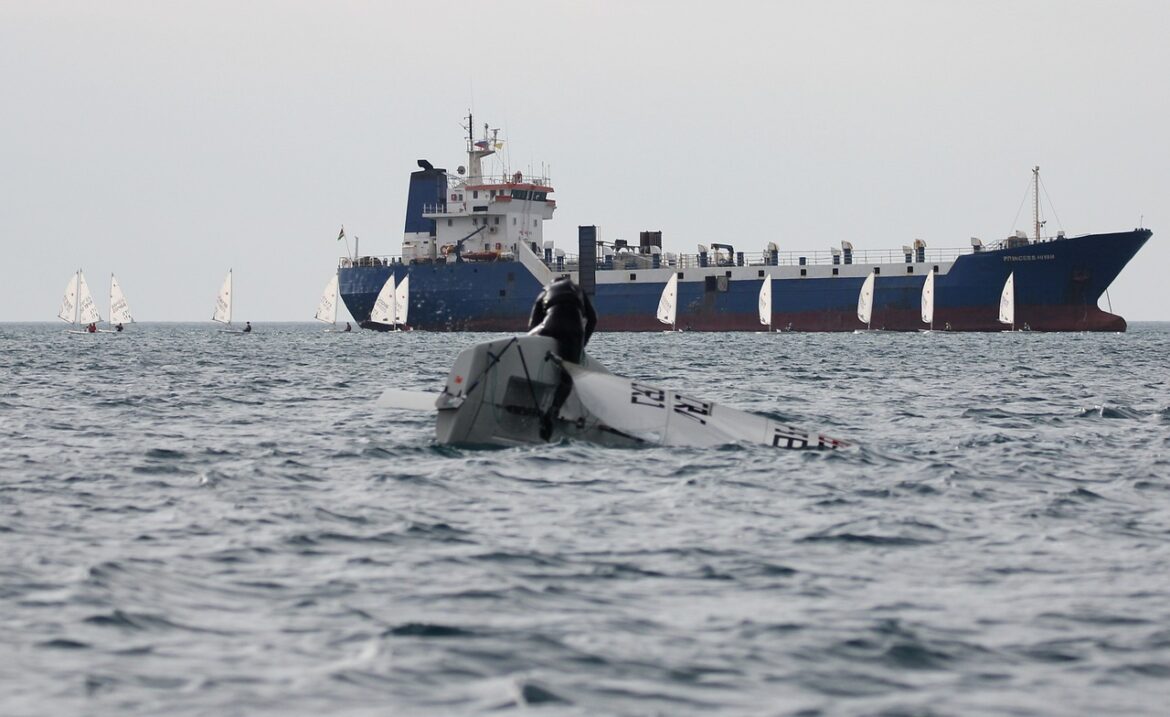On Saturday, July 27, 2024, a dramatic maritime event unfolded on Maryland’s Rhode River when the 122-foot luxury yacht, Lovebug, capsized, sending shockwaves through the boating community and drawing a significant response from emergency services. The $8 Million Yacht Capsizes Near Annapolis incident not only highlighted the inherent risks associated with large recreational vessels but also underscored the swift and effective response of the U.S. Coast Guard. Here’s a comprehensive look at what happened, the immediate aftermath, and the broader implications of this maritime mishap.
Lovebug – $8 Million Yacht Capsizes Near Annapolis
The Lovebug was a state-of-the-art yacht built in 2010, boasting an impressive price tag of $8 million. Designed for both luxury and performance, it featured cutting-edge technology, spacious accommodations, and advanced navigation systems. With a length of 122 feet, it was a prominent fixture on the water, representing the pinnacle of modern yacht engineering.
The Incident of $8 Million Yacht Capsizes Near Annapolis
On that fateful Saturday, the Lovebug was cruising along the Rhode River, a popular spot for both leisure and professional boating, located near Annapolis, Maryland. At approximately 12:30 PM, the U.S. Coast Guard received a distress call reporting that the yacht had capsized. The call indicated that the vessel was in a precarious position, and the crew had been forced to abandon ship.
What Caused the Capsize?
Initial investigations on $8 Million Yacht Capsizes Near Annapolis suggest that a combination of factors contributed to the Lovebug’s capsizing. While the exact cause remains under investigation, early reports point to potential mechanical failures and adverse weather conditions as significant contributors. The yacht was said to be navigating through unexpectedly rough waters, possibly exacerbated by a sudden change in weather. Additionally, there were speculations about possible stability issues, which can be influenced by load distribution and operational errors.
The Response
Upon receiving the distress call about $8 Million Yacht Capsizes Near Annapolis, the U.S. Coast Guard’s response was swift and coordinated. Units were dispatched from nearby stations, and a full-scale rescue operation was initiated. The immediate priority was to ensure the safety of the crew and any passengers on board.
Rescue Operations
The Coast Guard deployed multiple assets, including helicopters and rescue boats, to the scene. Fortunately, the crew had successfully abandoned ship and was in the water, equipped with life jackets and emergency flotation devices. The rescuers faced challenging conditions, including strong currents and rough seas, but managed to retrieve all crew members safely. There were no reported casualties, but some individuals sustained minor injuries, which were promptly treated by medical personnel.
Aftermath and Investigation on $8 Million Yacht Capsizes Near Annapolis
In the days following the incident, a thorough investigation was launched to determine the exact cause of the capsizing. The National Transportation Safety Board (NTSB), along with other maritime safety agencies, began examining the wreckage, reviewing operational logs, and interviewing crew members to piece together the events leading up to the disaster.
The investigation focused on several key areas:
- Mechanical Failures: Assessing whether any component malfunctions contributed to the loss of control.
- Weather Conditions: Analyzing weather reports to understand their impact on the yacht’s stability.
- Crew Actions: Evaluating the crew’s decision-making processes and adherence to safety protocols.
- Design and Stability: Reviewing the yacht’s design specifications to identify any inherent stability issues.
Broader Implications
The capsizing of the Lovebug has broader implications for the maritime community. Luxury yachts, like the Lovebug, represent significant investments, and their operation requires meticulous attention to safety and maintenance.
Safety Protocols
This incident highlights the critical importance of adhering to safety protocols. Regular maintenance, thorough safety drills, and a comprehensive understanding of the vessel’s handling characteristics are essential for preventing similar accidents. Yacht owners and operators are reminded of the need to continuously review and update their safety procedures to ensure preparedness for emergency situations.
Weather Preparedness
The unpredictable nature of weather conditions can pose serious risks to maritime operations. This incident underscores the need for real-time weather monitoring and contingency planning. Advanced weather forecasting tools and apps can provide vital information that helps in making informed decisions while navigating.
Regulatory Oversight
In the wake of such incidents, there is often a call for stricter regulatory oversight and improved safety standards. The maritime industry may see increased scrutiny and updated regulations to enhance safety measures and prevent future occurrences.
Conclusion on $8 Million Yacht Capsizes Near Annapolis
The capsizing of the Lovebug was a dramatic and unsettling event that drew considerable attention due to the yacht’s high value and the dramatic nature of the incident. Fortunately, the swift response of the U.S. Coast Guard ensured that all crew members were rescued safely, but the incident serves as a stark reminder of the inherent risks of operating large recreational vessels.
As investigations continue, the maritime community will undoubtedly reflect on the lessons learned from this incident. Enhanced safety measures, rigorous maintenance protocols, and better preparedness for adverse conditions will be crucial in preventing similar accidents in the future. The story of the Lovebug is a testament to both the challenges and the resilience of the maritime world.
